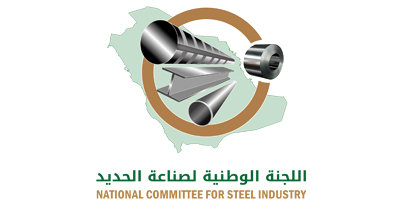Riyadh – May 27, 2021: Raw material prices and, as a consequence, the prices of final steel products, have since mid-last year seen recurring price rises to unprecedented levels. This included all types of steel, including long products, which are typically comprised of rods, rebar, beams, and oil & gas pipes, or flat products consisting of hot and cold rolled coils, zinc galvanized, and pre-painted steel coils & sheets.
Observers and analysts attribute the continued rise of steel prices to many different factors. They contend that while prices started to rise due to China’s sudden transformation from a net exporter to a net importer of final steel products in Q3 2020, another factor ensued, namely the scarce production of iron ore in the more known producing countries, such as Brazil, which witnessed an uncontrollable spread of the Coronavirus pandemic and saw one of its major mines collapse, and Australia which suffered floods adversely affecting production and supply levels.
During the first months of 2021, a number of other factors were responsible for the continued rise in the prices of iron and steel raw materials and final products. Those factors included the improved and growing global demand, particularly in China, India, and European Union member states, coinciding with corrective measures taken in the world’s iron and steel factories aimed at synchronizing their production processes with environmental improvement requirements and the minimization of gas emissions within the climate change guidelines. This resulted in the continued disruption of supply chains and subsequently higher prices. In this contexts, it should be pointed out that China is the world’s largest iron and steel producer, with 53.5% of the total global production totaling 1,955 billion tons in 2020. China had exported approximately 112 million tons in 2014, but its exports gradually declined to 62 million tons in 2019 and 54 million tons in 2020.
In a year-over-year comparison of May 2020 average prices to May 2021, it is noted that the price of iron ore increased from US$ 87 to US$ 227, which is considered one of the factors with the greatest impact on the cost of production of iron. It is also noted that scrap iron prices rose from US$ 250 to US$ 510. This in turn led to price increases of products, such as billets used in the production of iron rebar, from US$ 380 in May 2020 to more than US$ 685 in May 2021, an increase of 80%. In addition, prices of hot-rolled flat steel used in the production of cold-rolled, galvanized, and pre-painted steel coils & sheets rose from US$ 410 in May 2020 to US$ 1,100 – US$ 1,300, C&F Saudi seaports, an increase of around 170%. The price of zinc used in coating galvanized and pre-painted steel sheets, also rose from an average of US$ 1,963 in May 2020, to an average of US$ 2,965 in May 2021, an increase of more than 50%.
On the other hand, in the beginning of May 2021, China attempted to control the rise of iron and steel prices in its domestic market in particular, by rescinding the rebate system applicable to the majority of steel product exports, with the aim of decreasing exports in favor of the domestic market, and correct of the prices which reached “unreasonable levels”. The rebate system was based on the Chinese Government’s granting a value-added tax (VAT) rebate of 13% to Chinese exports. As a result, an additional increase in the prices of Chinese steel products earmarked for export, against decreasing them in the domestic market. This prompted many other globals produces, such as India, Japan, Taiwan, and others to increase the prices of their export products. In a later development, the Chinese Government announced that it may be obliged to impose a tax on steel exports if prices in the domestic markets do not drop to “reasonable and convincing” levels.
While talk of prices is beginning to tone down inside China, some observers and analysts note that what China aspires to achieve may not last long and that it will not reflect on export prices, given the effects of a number of other global factors pushing in the direction of extending the period of high prices. While the factors affecting prices are numerous and diverse, grasping developments and projecting a future outlook seems to be a complicated and complex exercise, requiring more time than expected in order for matters to become clearer, reaching a state where all, or at least the majority, of those factors, become more stable than they are at the present time.
At the local scene, although domestic prices were affected by recurring global increases in the prices of raw materials and final products, the price level remains lower than what is prevailing in European, US, and most regional markets. Local experts have stated that steel producers in the Kingdom have sufficient production capacities to cater to all the requirements of the domestic market, with product surpluses allowed them to export to many destinations throughout the world in recent months, including China, the world’s largest producer, and consumer.
—————————————————————— E N D —————————————————————
